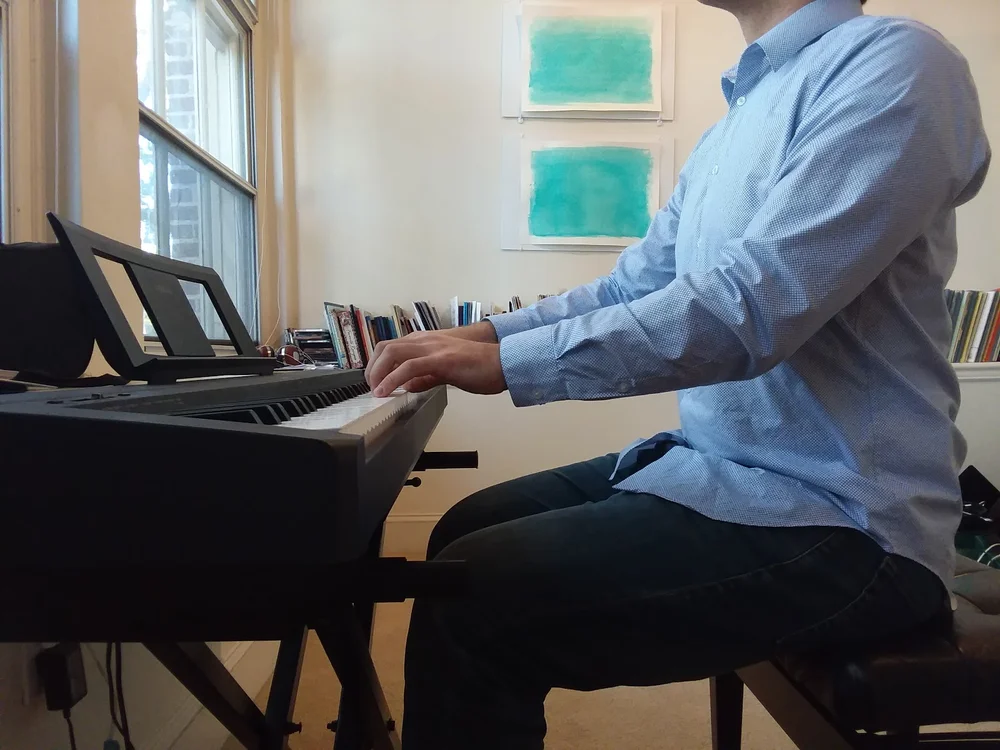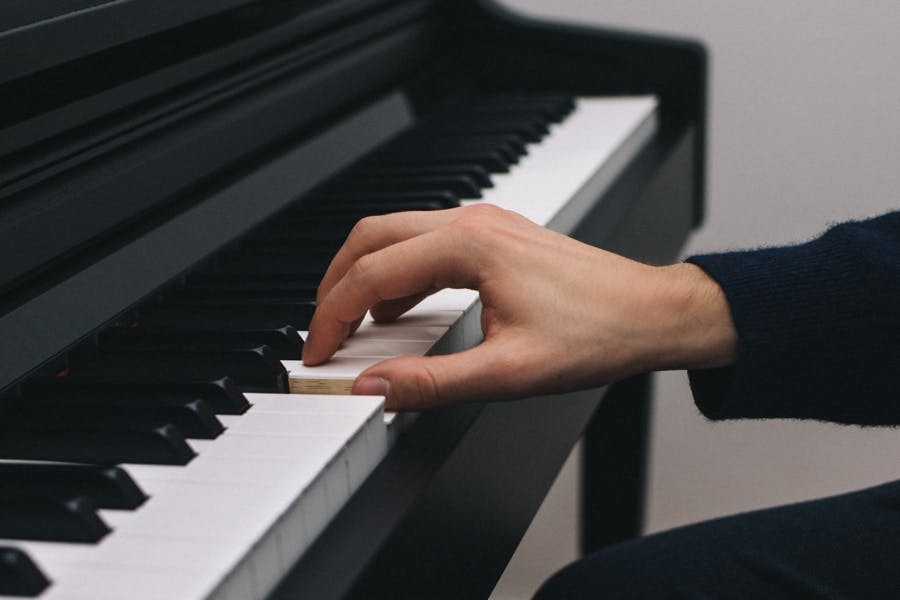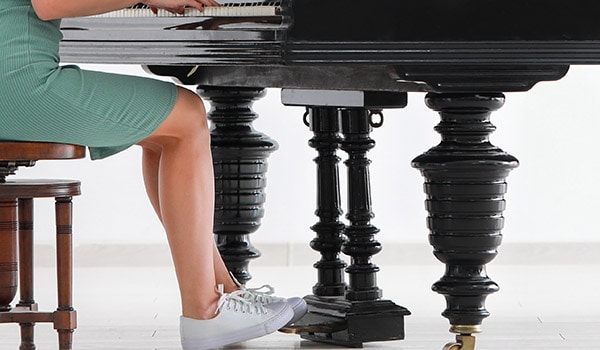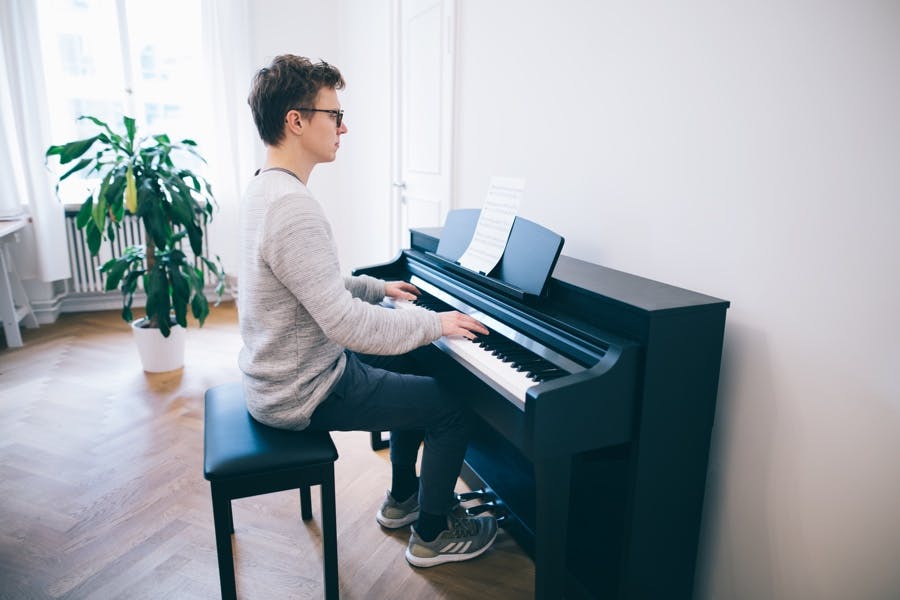Piano teachers teach you how to sit at the piano properly. Because it is far more difficult to modify strange behaviours later on. From natural hand movement to flawless pedalling, how you sit at the piano affects every element of your performance.
Have a friend or family member verify the angle of your arm if necessary, or have a mirror near you so you can check your posture frequently. As you progress, you'll establish the habit of sitting comfortably at the piano and won't need to check as frequently. However, during the first week or two, it's best to remain cautious until it becomes natural.
Seat Adjustment
It's key to select the appropriate piano seat. If you want to play the piano properly while avoiding back and neck problems, you should avoid an armchair or a wheeled office chair with armrests chairs. Make sure your seat is at the proper height. Double-check that the chair or seat you're in is the right height for you. On the side of certain piano benches are knobs that may be used to raise or lower the seat.
Sit As Far Apart As Possible
You should sit further back at the piano in front of Middle C, with adequate space between your body and the keyboard's border. Free movement of the arms and hands is permitted. As a general rule, keep your knees directly beneath the keyboard. If both knees are totally exposed, you're sitting too far back. If half your thighs are below the piano, you're probably too close.
Rest Your Fingers
Extend your arms in front of you and place your hands on the keyboard. Some tutors may advise curling your fingers, but this is not a soothing technique of playing and will instead tense you up. Simply place your fingers on the keyboard. The upper arms should be the source of any "effort" you feel in your arms. It shouldn't feel like your forearms are supporting you or that your wrists or fingers are putting in all the work. It should feel as if your upper arms are keeping your arms in place. However, do not tense up into your ears and maintain your shoulders relaxed.
Relax Your Wrists and Elbow
Wrists should be loose, and elbows should be parallel to wrists. You take your elbow with you and bend your body side to side as you go down the keyboard. We have more mobility in our hips to move side to side and carry our elbows and bodies to the ends of the piano when we sit forward on the seat, putting less stress on our wrists and hands to reach out.
Place The Legs
Place your right foot on the sustain (right) pedal, maintaining it in the elevated position, if you know you'll be utilising it. The whole time, your heel should be in touch with the floor, and the pedal should be activated by the ball of your foot. Now, with your left-hand little finger, play the bottom note of your piano and with your right-hand little finger, play the top note of your piano. It entails leaning in close to the piano, but it's not difficult.
Position Yourself
Place your seat as far away from the piano as your fingertips are from the keys, with your elbows in front of you. Some believe that the piano is lowered to knee height, but that it is favoured at the thigh's commencement. Your feet are not only under the knees but also somewhat forward them to reach the pedals and create a wider than 90-degree inclination between your legs. Make sure your forearm and upper arm are at a 90-degree angle, and that your hand is slightly elevated and curling down toward the keyboard. In addition, instead of hunching over, maintain your back straight.
Necessity For A Piano
Another consideration when sitting at the keyboard is the placement of your music. The advantage of upright pianos is that the music is directly in front of your eyes. The music stands on grand pianos are often taller and farther away from you, necessitating you to sit a bit higher on your bench. Check out this comparison of acoustic and digital pianos if you're thinking about buying a new piano and need some guidance. Also, check to see if your music stand has enough illumination. Several great clip-on reading lights that may be simply added to the music stand are available. Some of them can run on both batteries and USB power.
Learn Music Online - Stay Home - Stay Safe
You may learn to play music from the comfort of your own home if you enjoy it. Meet our instructors, who teach piano, electronic keyboard, and guitar using a step-by-step method. You'll get our extra course "Voice Culture" for free when you sign up for an Online Music Classroom subscription.
There's a video lesson, sheet music, midi, karaoke, and a package to buy in the Music Library!
See our buying guide for information on how to purchase a piano, electronic keyboard, or guitar.
Now is the time to join us!
To be able to learn music at any time and from any place.
Enrol today at classroom.goldsmth.com.
How do you feel about this blog? Please share your thoughts in the comments box below.
How To Sit At The Piano?
 Reviewed by Goldsmth
on
September 14, 2021
Rating:
Reviewed by Goldsmth
on
September 14, 2021
Rating:
 Reviewed by Goldsmth
on
September 14, 2021
Rating:
Reviewed by Goldsmth
on
September 14, 2021
Rating:
















Thank you! It helped me ��
ReplyDelete